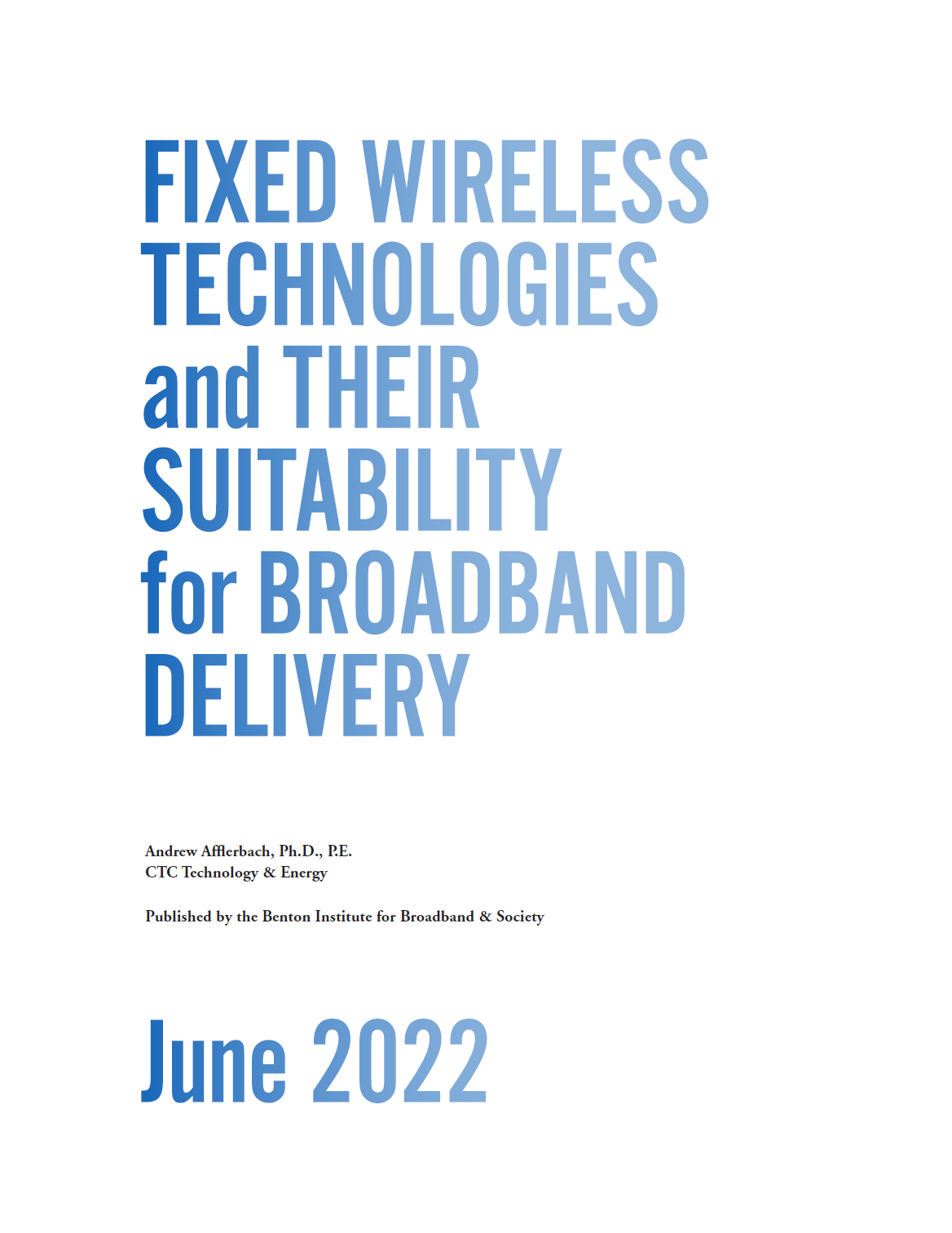Fixed Wireless Technologies and Their Suitability for Broadband Delivery
Written by Andrew L. Afflerbach, Ph.D., P.E.
CTC Technology & Energy
As state and local governments and their partners plan to invest billions of dollars in federal funding to build broadband infrastructure, choosing the best technology will have significant long-term implications. Federal policymakers have addressed this subject to some degree: For example, the Broadband Equity, Access, and Deployment (BEAD) Program’s notice of funding opportunity (NOFO) preferences fiber over fixed wireless.
To aid state and local policymakers, this report offers an engineering analysis of fixed-wireless technologies and their suitability for delivering broadband service in various environments. The report addresses a range of critical technology and cost considerations related to fixed-wireless networks—and, as a point of comparison, to fiber-to-the-premises networks.
At a high level, the report concludes the following:
- Fixed-wireless technologies will continue to improve but will not match the performance of fiber-optic networks—primarily because the existing and potential bandwidth of fiber is thousands of times higher than wireless. Also, fixed-wireless networks have inherent capacity limitations that sharply limit the number of users on a network using a given amount of spectrum.
- Fixed-wireless network coverage is adversely affected by line-of-sight obstructions (including buildings and seasonal foliage) and weather. While a fiber network can physically connect every household in a service area (and deliver predictable performance), it is significantly more complex for a fixed-wireless network to deliver a line of sight to every household in a service area.
- Scalability is a critical challenge to fixed-wireless deployments, both technically and financially. A given amount of wireless spectrum is capable of supporting a given amount of network capacity. If the number of network users increases or users need more bandwidth, the network operator must increase the spectrum (which is both scarce and extremely expensive—and may not be possible), upgrade the technology, or add antennas. It is challenging to design a fixed wireless network that will provide sufficient, robust upstream and downstream capacity and reach all the addresses in unserved areas.
- The fastest fixed-wireless technologies (such as those that use millimeter-wave spectrum) are effective in delivering short-range service to closely grouped households in urban and suburban settings. These technologies are largely unsuitable for serving rural communities because of the typical geographic dispersion of addresses and the lack of mounting structures (such as towers or building rooftops).
- Fiber is sustainable, scalable, and renewable. It offers greater capacity, predictable performance, lower maintenance costs, and a longer technological lifetime than fixed-wireless technologies. Fiber service is not degraded by line-of-sight issues and is not affected by the capacity issues that constrain fixed wireless networks.
To further illustrate the relative strengths and weaknesses of fixed-wireless technologies, this report presents an analysis of capital and operating costs for a candidate fixed wireless network as compared to a candidate fiber optic network in the same real-world settings. The candidate networks were each designed to deliver complete coverage to unserved residential locations.
While the cost analysis illustrates that fiber’s upfront capital costs are higher than those of fixed wireless in many circumstances, the total cost of ownership over 30 years is comparable for fiber and fixed wireless.
Given the above analysis, fiber offers the greater long-term value as compared to fixed-wireless technologies because of fiber’s long life, capabilities, scalability, and flexibility. In the event that a state funds technologies other than fiber, such as in circumstances where the capital cost to build fiber is cost-prohibitive or the need for service cannot wait for fiber construction, the state should take steps to protect its investment—such as by requiring grantees to guarantee the long-term maintenance and operations of the fixed wireless network. This could be accomplished by requiring a 20-year performance and budget roadmap, and a viable strategy for full service where line-of-sight is a challenge.
This publication was commissioned by the Communications Workers of America and prepared by CTC Technology & Energy in the spring of 2022.


